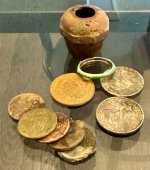uniface
Silver Member
Not sure if you can access this without signing up. But if you're heavily into Paleo lithics in Michigan & adjacent Canada, here you go then :
https://www.academia.edu/39702654/S...County_Michigan_USA?email_work_card=thumbnail
(The supposition that because they were made in one uniform manner, they must be the work of a single individual, is almost too silly to deserve comment).
https://www.academia.edu/39702654/S...County_Michigan_USA?email_work_card=thumbnail
(The supposition that because they were made in one uniform manner, they must be the work of a single individual, is almost too silly to deserve comment).
Upvote
0






